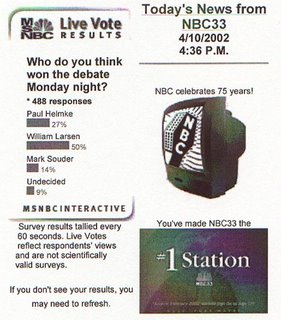Energy
E-85 gasoline is being promoted as clean, renewable and cheap, is this true? We the taxpayers are subsidizing the production of E-85 to the tune of 51 cents per gallon. If E-85 cost 51 cents more per gallon would it be cheaper than regular gas, no? E-85 contains 30% less energy than gasoline. When gas is $2.30 a gallon, E-85 should cost $1.66. Subtracting 51 cents, it should cost $1.15. In terms of cheaper, it fails this test. Someone is making a lot of money.
Studies show that production of ethanol is an energy loss. It takes 90,000 to 131,000 BTU’s to produce a gallon of Ethanol, which has just 83,961 BTU’s. When energy credits are applied to by products produced, Ethanol is slightly positive. However, the studies do not take into account total energy consumed to support the production of Ethanol such as; building the combines to plow & harvest the grain, the energy to heat and maintain the farmer’s home, and the energy cost to build the ethanol plant. Energy credits for by products are estimated, but energy costs for the ethanol infrastructure are not.
Much depends on the grain used, the grain yield per acre, method of farming and whether the grain is wet or dry prior to distillation. The bushels per acre will affect the energy balance considerably. The higher the yield per acre the more energy per acre that can be obtained. However, since we eat grains and the supply of grain affects price, there is no escaping the fact that using grains to produce ethanol will not hold down costs. If we divert those areas of the country with highest yield to ethanol production while diverting those with lowest yield to non-ethanol consumption, we will have to bring more acres into production consuming more fossil fuels to meet our feed and food needs. Did we save anything, no?
It takes a distillation process to convert grains to ethanol. The energy used in this process comes from natural gas, coal, nuclear or hydro. Coal is dirty and produces acid rain; nuclear has a waste disposal problem, which after 40 years is still unresolved; hydro is the cleanest of all and renewable. In the Midwest, there is little hydro electric. Most of our electrical production is from coal, natural gas or nuclear, all non-renewable and all somewhat dirty. Though ethanol is being touted as clean burning, the production of ethanol is anything but clean. The backyard where the coal fired plant is located is being polluted more while the area the E-85 is sold will have less pollution. Rather like selling pollution credits.
Energy is very important to our economy and standard of living. It affects our jobs, costs, environment and more. Burning a fuel to get work out is old technology and pollutes. What we need is a new 21st century power source, one that is renewable, clean, abundant, reliable and not dependent on others. That energy source is right in front of our faces.



2 Comments:
E-85 is made from renewable sources, that has to count for a lot considering our current position...
The bio-mass does account for something. It has an energy content of 83,000 btu’s. This 83,000 btu’s is the result of the sun shining down on the earth creating the weather we have that allows the bio-mass to grow.
For us to convert this bio-mass to a usable energy form such as ethanol, it will take a distillation process. The distillation process requires a lot of energy to separate out the water. We then have the basics such as 5 gallons of fossil fuel per acre of cultivated land. We have the fossil fuel to transport the bio-mass to the distillation plant. We have the energy it takes to construct the plant, the energy it takes to get people to and from the plant and the list can go on, all in the production of ethanol. In simple terms, it takes more energy to make a gallon of ethanol than the ethanol has. The process is not positive, but negative. Total Energy consumption increases, it will not decrease with Ethanol.
We do not have coal burning cars, or nuclear powered cars, we have cars that burn a liquid fuel. Therefore, if we want to convert an energy source that we have in abundance to ethanol, then that is perfectly fine. But we must realize this process will polute, be energy inefficient and could be costly.
Ethanol is not a bad idea, but the reason for converting bio-mass to ethanol should be solid. If it is to create cleaner burning fuel, it fails because the energy source used to distill it is dirty. If it is to reduce our dependence on foreign oil, then this will work as long as we are not using foreign oil or any oil for that matter to transform bio-mass to ethanol. If we use coal, hydro or nuclear, then all we are doing is converting one source of energy into another.
Ethanol should have to compete on the open market with other sources of energy. Giving billions of dollars to companies in the form of tax credits to develop and produce ethanol is dumb.
Post a Comment
<< Home